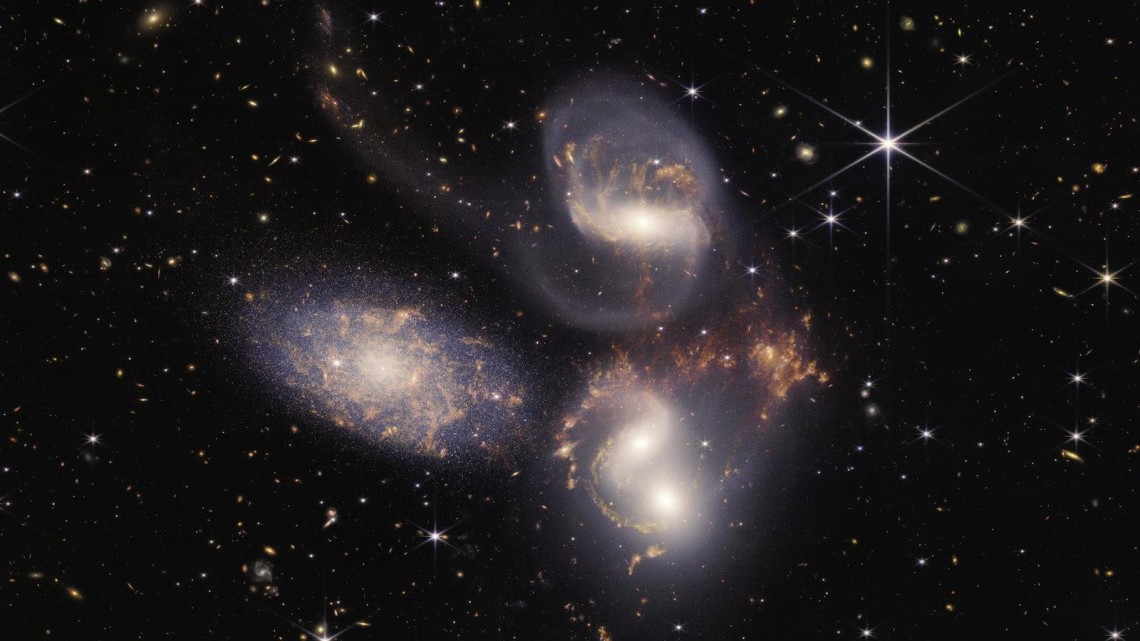
In this image of Stephan’s Quintet, a visual grouping of five galaxies from the James Webb Space Telescope, sparkling clusters of millions of young stars and starburst regions of fresh star birth are revealed. Sweeping tails of gas, dust and stars are being pulled from several of the galaxies due to gravitational interactions. Most dramatically, Webb captures huge shock waves as one of the galaxies, NGC 7318B, smashes through the cluster.
News directly from Cornell's colleges and centers
‘Gas-trophysics’ symposium expands on work of two Cornell astronomers
By Kate Blackwood
Among astronomical topics, gas can be underappreciated, says astronomer Martha Haynes; yet the stuff that powers stars and generates storms on Jupiter is a key to understanding the universe.
"Gas fills the space between the planets, between the stars and between the galaxies,” said Haynes, Distinguished Professor of Arts and Sciences in Astronomy in the College of Arts & Sciences. “Gas generates turbulent weather on the planets, fuels star formation in galaxies and tells us that dark matter must exist."
These and other burning questions about the distribution and dynamics of gas drove the careers of renowned Cornell astronomers Peter Gierasch and Riccardo Giovanelli. On July 15, friends and colleagues of the late professors will celebrate their work and lives during “Gas-trophysics Across the Universe,” a symposium organized by Cornell’s Friends of Astronomy.
Held in the Physical Sciences Building and starting at 9 a.m. EDT, with an option to attend online, the all-day symposium will explore the characteristics and importance of gas across the universe as embodied in the lifetimes’ work of Gierasch and Giovanelli. The event is co-organized by Haynes and Philip D. Nicholson, professor of astronomy (A&S).
Read the full story on the College of Arts and Sciences website.
Media Contact
Get Cornell news delivered right to your inbox.
Subscribe
